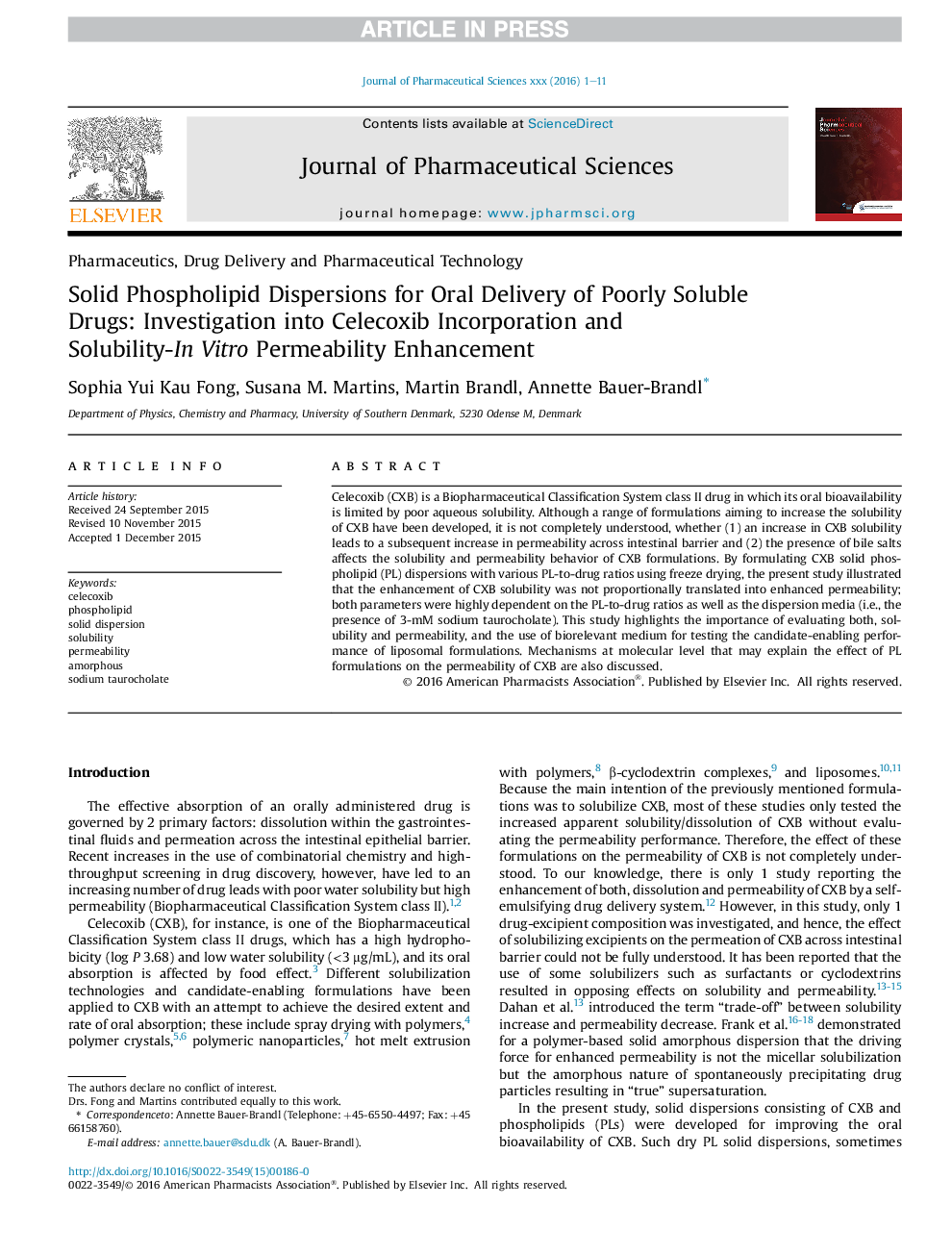| Article ID | Journal | Published Year | Pages | File Type |
|---|---|---|---|---|
| 2484552 | Journal of Pharmaceutical Sciences | 2016 | 11 Pages |
Abstract
Celecoxib (CXB) is a Biopharmaceutical Classification System class II drug in which its oral bioavailability is limited by poor aqueous solubility. Although a range of formulations aiming to increase the solubility of CXB have been developed, it is not completely understood, whether (1) an increase in CXB solubility leads to a subsequent increase in permeability across intestinal barrier and (2) the presence of bile salts affects the solubility and permeability behavior of CXB formulations. By formulating CXB solid phospholipid (PL) dispersions with various PL-to-drug ratios using freeze drying, the present study illustrated that the enhancement of CXB solubility was not proportionally translated into enhanced permeability; both parameters were highly dependent on the PL-to-drug ratios as well as the dispersion media (i.e., the presence of 3-mM sodium taurocholate). This study highlights the importance of evaluating both, solubility and permeability, and the use of biorelevant medium for testing the candidate-enabling performance of liposomal formulations. Mechanisms at molecular level that may explain the effect of PL formulations on the permeability of CXB are also discussed.
Related Topics
Health Sciences
Pharmacology, Toxicology and Pharmaceutical Science
Drug Discovery
Authors
Sophia Yui Kau Fong, Susana M. Martins, Martin Brandl, Annette Bauer-Brandl,
